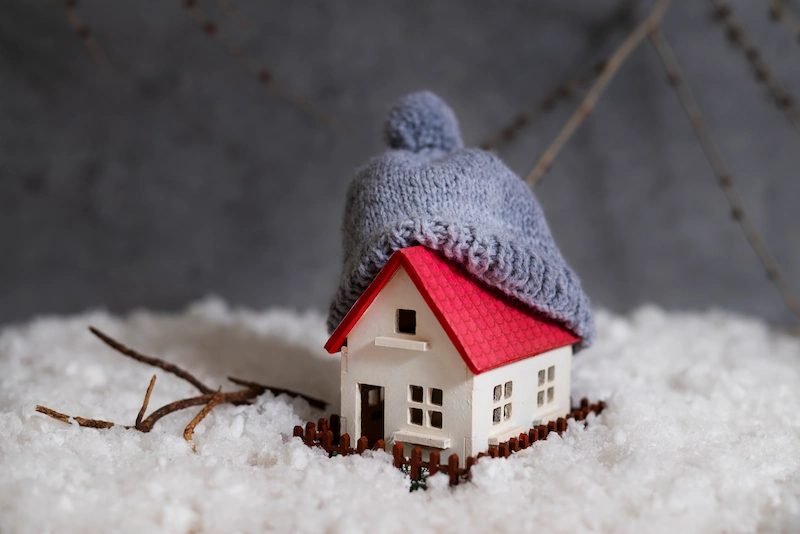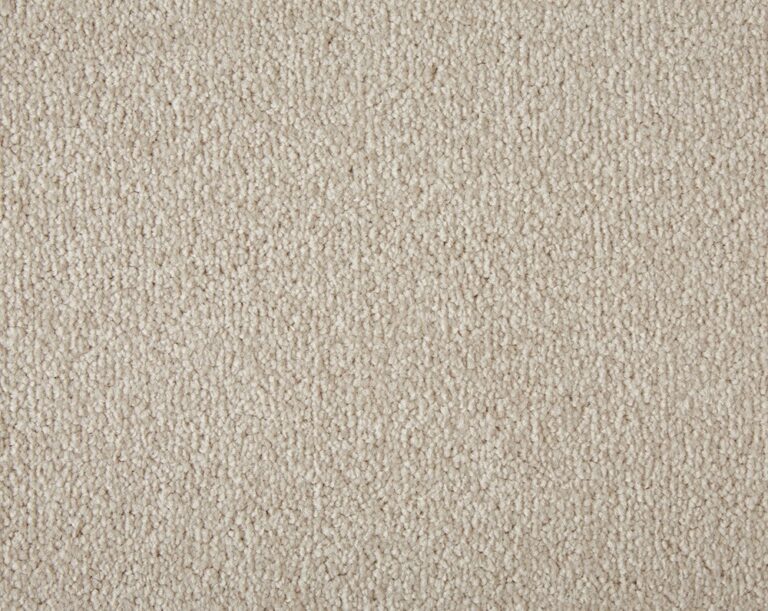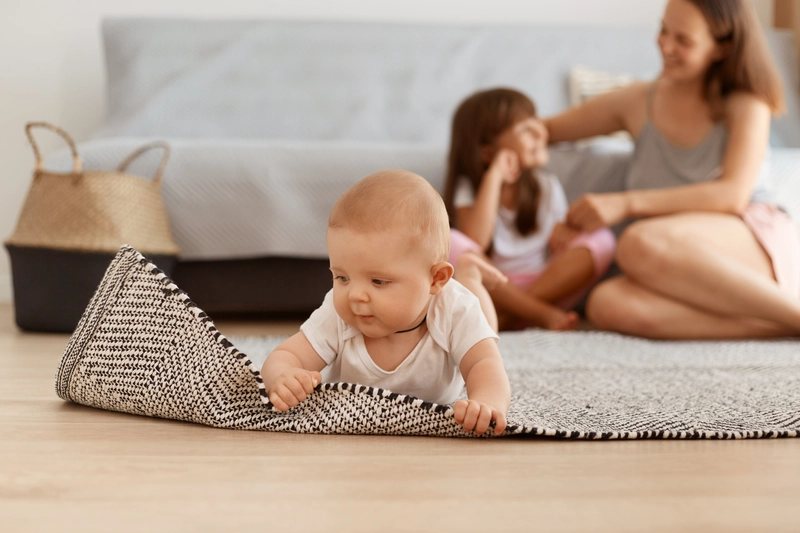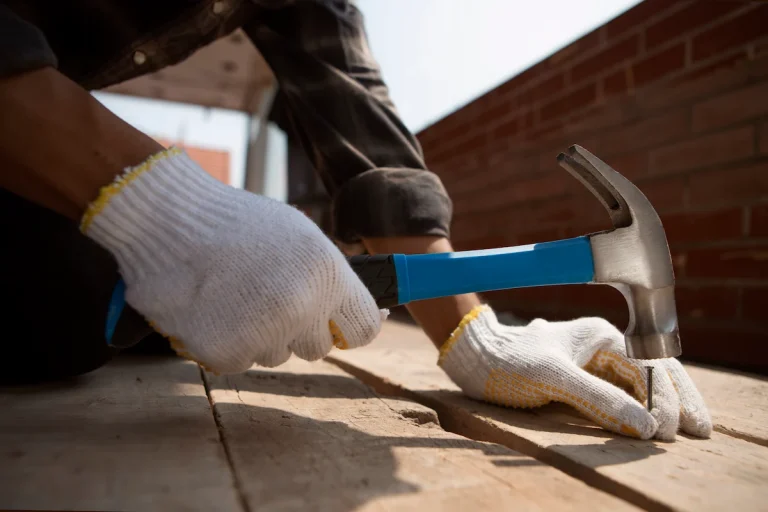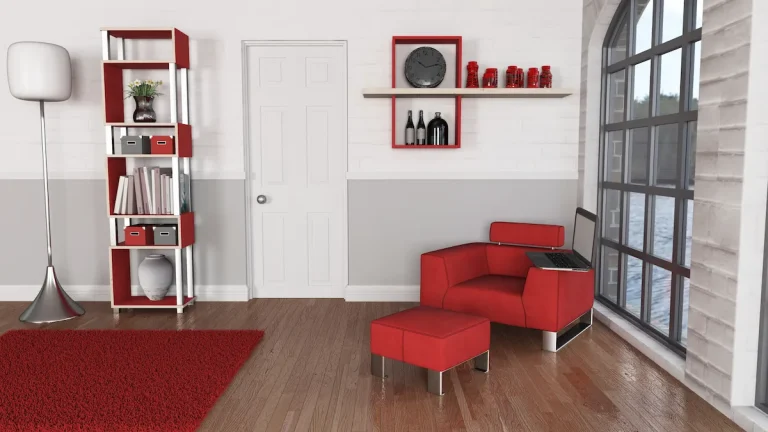As winter approaches, selecting the appropriate flooring for your home becomes essential to ensure comfort and warmth during the colder months. Not all flooring options offer the same benefits in cold weather; factors such as durability, insulation, and water resistance are critical in maintaining a cozy and warm flooring environment.
This article examines various winter flooring options, outlining their advantages and disadvantages, as well as key considerations to assist you in making an informed decision that aligns with your winter needs. Whether you are renovating an existing space or constructing a new one, it is important to identify the winter flooring options that best suit your lifestyle and budget.
What Makes a Good Flooring for Cold Weather?
Selecting appropriate flooring for cold weather is essential for ensuring a warm and comfortable home environment, particularly during the winter months when heating expenses may increase considerably.
The optimal flooring for winter should not only provide insulation against the cold but also exhibit durability to endure the wear and tear associated with snow and moisture.
Options such as carpets and engineered hardwood can enhance comfort while effectively managing energy costs. Furthermore, taking into account factors such as installation type, maintenance requirements, and overall aesthetics will assist in making a well-informed decision.
Durability
Durability is a critical consideration when selecting flooring for winter, as it must effectively withstand the challenges associated with moisture-prone areas and heavy foot traffic during the colder months. When evaluating flooring options, it is essential to assess how each type performs under the unique demands of winter, ensuring not only comfort but also longevity.
Luxury vinyl, for example, offers exceptional water resistance and can replicate the appearance of natural materials, thereby enhancing both functionality and aesthetic appeal in any space. Laminate flooring is another viable choice, providing impressive durability and resistance to scratches and dents, making it an excellent option for heavy foot traffic and moisture-prone areas. Additionally, rubber flooring presents a noteworthy option due to its excellent traction and cushioning properties, making it particularly suitable for areas prone to spills and slip hazards. Selecting the appropriate durable flooring for winter can significantly influence the overall comfort and safety of a home during frigid temperatures.
- Luxury Vinyl: This type combines aesthetic appeal with exceptional durability, featuring a waterproof core that ensures moisture does not compromise its integrity.
- Laminate: Renowned for its resistance to wear and damage, laminate flooring performs well under heavy foot traffic and is available in a variety of styles.
- Rubber Flooring: Recognised for its softness underfoot and slip resistance, rubber flooring is especially effective in maintaining safety in households with children or elderly residents.
Each of these options can maintain their appearance and structural integrity, providing a dependable solution to withstand the challenges presented by winter conditions. Additionally, cork flooring offers a natural warmth and comfort underfoot.
Insulation
Effective insulation is essential for winter flooring, as it significantly contributes to maintaining a warm home while reducing energy costs.
By employing various insulation methods, homeowners can achieve a more comfortable living space that enhances warmth and decreases energy consumption. Appropriate insulation techniques, such as underfloor heating, can efficiently distribute heat from the floor upwards, ensuring the residence remains snug even during the coldest months. This consistent warmth reduces reliance on traditional heating systems, facilitating substantial cost savings over time. Insulated floors also help prevent draughts and moisture accumulation, thus promoting a healthier indoor environment.
For those contemplating a renovation or new build, several important aspects should be taken into account:
- Types of insulation materials, such as fibreglass, foam, and cellulose
- Benefits of radiant floor heating systems
- Long-term energy savings and environmental impact
Investing in quality insulation not only enhances the comfort of the home but also contributes to a more sustainable lifestyle.
Water Resistance
Water resistance is a critical factor to consider when selecting flooring options for winter, particularly in moisture-prone areas where snow and slush may cause significant damage. The choice of flooring during this season can profoundly impact both the aesthetic appeal, insulation, and durability of a home.
For homeowners, it is essential to understand the benefits of water-resistant flooring options, such as vinyl and laminate. These materials effectively mitigate the effects of moisture while providing a durable solution capable of withstanding the harsh conditions characteristic of winter. Cork flooring also offers water resistance and a comfortable underfoot experience.
- Durability: Water-resistant flooring is specifically designed to resist warping and damage, preserving its appearance and integrity even when subjected to wet conditions.
- Safety: High-quality vinyl and laminate options frequently feature slip-resistant surfaces, offering an additional layer of protection against falls in slippery environments.
- Maintenance: These flooring types are generally easier to clean and maintain, reducing the risk of grime and moisture build-up that can lead to mould and mildew. Using area rugs can also help protect flooring and add warmth.
Investing in such flooring solutions not only enhances comfort but also provides peace of mind, ensuring that your floors will endure whatever winter has to offer. Home improvement projects focusing on flooring can significantly improve the overall functionality and aesthetics of your living space.
Maintenance
Maintenance of flooring is essential during the winter months, as the accumulation of dirt, snow, and moisture can lead to damage if not addressed appropriately.
Proper upkeep not only enhances the aesthetic appeal of various flooring types but also plays a critical role in ensuring their durability over time, particularly in moisture-prone areas. For instance, luxury vinyl flooring is particularly vulnerable to the harsh elements of winter, necessitating regular cleaning to prevent water damage. Similarly, carpets can absorb moisture, which may result in mould growth if they are not frequently vacuumed and treated with suitable cleaning solutions.
Here are some targeted maintenance tips for different flooring types:
- Carpets: Vacuum regularly to remove dirt and debris, and consider professional cleaning every six months.
- Luxury Vinyl: Use a damp mop for cleaning, and avoid excess water to prevent warping.
- Laminate: Wipe spills immediately and utilise a microfiber cloth for daily maintenance.
By adhering to these straightforward yet effective practices, homeowners can significantly prolong the lifespan and appearance of their flooring throughout the winter season.
Types of Flooring for Winter
When selecting flooring for winter, it is essential to examine various options that address both aesthetic preferences and functional requirements.
Each type of flooring, ranging from comfortable carpets to durable tiles, presents distinct advantages that can contribute to a warm and inviting atmosphere in the home during the colder months.
For example, carpets provide a comfortable underfoot experience, while luxury vinyl is capable of resisting moisture and improving insulation. Furthermore, laminate and engineered hardwood offer a combination of durability and style, ensuring that the home remains both practical and visually appealing throughout the winter season.
Carpet
Carpets are among the most effective options for providing warmth in winter, as they offer both comfort and insulation against cold surfaces.
By selecting the appropriate types of carpets, individuals can significantly enhance their indoor environments, creating a cosy refuge during the colder months. Two of the most popular choices are polypropylene and wool carpets, each with its own distinct advantages.
Polypropylene carpets are well-known for their durability and stain resistance, making them particularly suitable for high-traffic areas. In contrast, wool carpets are esteemed for their natural fibres, which not only excel in insulation but also provide a luxurious texture underfoot.
- Polypropylene: Durable and easy to clean.
- Wool: Luxurious feel and excellent thermal properties.
Incorporating area rugs can serve as an additional option for those seeking to enhance warmth and style in specific rooms. These versatile solutions can be layered over existing flooring, adding an extra layer of comfort while complementing the overall decor.
Hardwood
Hardwood flooring, particularly engineered hardwood, is widely regarded as an excellent choice for winter due to its durability and natural insulation properties.
This type of flooring not only enhances the aesthetic appeal of any space but also provides comfort during the colder months. Unlike traditional hardwood, which may be vulnerable to fluctuations in humidity and temperature, engineered hardwood is specifically designed to endure these variations, making it a more resilient option for winter conditions. Additionally, using area rugs can help mitigate heating costs by offering extra insulation.
- The aesthetic appeal of hardwood flooring is significant; it offers a rich, warm ambience that complements winter décor exceptionally well.
- Its insulation capabilities contribute to maintaining a cosy environment by minimising drafts, ensuring that the home remains snug and inviting.
- In terms of longevity, both traditional and engineered hardwood can last for decades when properly maintained; however, engineered hardwood has an advantage in stability, particularly in regions with varying climates.
Ultimately, whether one chooses traditional or engineered hardwood, the advantages during winter are evident, establishing it as a prudent investment for any homeowner.
Laminate
Laminate flooring offers a cost-effective and durable solution for winter; however, it may present limitations in terms of warmth compared to other flooring options.
Laminate flooring presents an excellent choice for winter, providing a durable and moisture-resistant option capable of withstanding the challenges posed by cold weather.
|||
Laminate flooring presents an excellent choice for winter, providing a durable and moisture-resistant option capable of withstanding the challenges posed by cold weather. Its polypropylene base and fiberglass construction contribute to its resilience and easy installation, which is appealing for budget-conscious homeowners.
Laminate flooring presents an excellent choice for winter, providing a durable and moisture-resistant option capable of withstanding the challenges posed by cold weather.
As temperatures decline, many homeowners seek flooring solutions that ensure both comfort and practicality in terms of maintenance and durability. One of the key advantages of laminate flooring is its resistance to moisture, making it an ideal selection for homes located in regions susceptible to snow and rain. Unlike hardwood, which may warp or buckle when exposed to moisture, laminate flooring maintains its structural integrity and aesthetic appeal even under adverse conditions.
The ease of maintenance associated with laminate flooring distinguishes it from alternatives such as carpet or tiles. A simple sweep or occasional damp mopping is sufficient to keep it looking pristine, in contrast to carpets that tend to trap dirt and allergens or tiles that necessitate regular grouting maintenance.
Below is a concise comparison of laminate flooring versus other types:
- Durability: Laminate is highly resistant to scratches and stains, unlike traditional hardwood.
- Installation: Its easy installation, often facilitated by click-lock planks, makes laminate a preferred choice for do-it-yourself enthusiasts.
- Cost-Effectiveness: Generally, laminate is more affordable than hardwood or high-end tiles, offering a budget-friendly alternative.
- Appearance: Laminate can convincingly replicate the look of natural wood or stone, allowing for versatile design options.
Ultimately, when evaluating flooring options for the colder months, it is clear that laminate flooring provides practical benefits that enhance both the aesthetic and functionality of any space. It’s a prudent choice for reducing heating costs while maintaining a cozy environment.
Vinyl
Vinyl flooring, particularly luxury vinyl, is recognised as a versatile option for winter due to its water resistance and comfortable underfoot feel.
|||
Vinyl flooring, particularly luxury vinyl, is recognised as a versatile option for winter due to its water resistance and comfortable underfoot feel. It effectively mimics the look of traditional materials while offering a budget-friendly and easy-to-maintain solution.
Vinyl flooring, particularly luxury vinyl, is recognised as a versatile option for winter due to its water resistance and comfortable underfoot feel.
This type of flooring is specifically designed to endure the harsh conditions typical of cold climates while offering a range of beneficial features that make it a practical choice for homeowners. For instance, vinyl flooring is renowned for its durability, ensuring it can withstand the wear and tear associated with heavy foot traffic, which is especially common during winter months when households experience increased activity.
- Ease of Installation: One of its appealing characteristics is the straightforward installation process, allowing homeowners to transform their spaces without the need for extensive renovations or professional assistance.
- Aesthetic Flexibility: Luxury vinyl is available in a variety of styles and finishes, mimicking the appearance of polished wood or sleek stone, enabling homeowners to achieve the desired aesthetic in any room.
These features, combined with the option of underfloor and radiant heating systems, collectively position vinyl flooring as a wise and stylish choice for individuals residing in colder climates, where warmth, resilience, and visual appeal are essential considerations.
Tile
Tile flooring presents a stylish and practical option for winter; however, it may necessitate additional insulation to enhance warmth underfoot.
Tile flooring, often paired with underfloor heating, presents a stylish and practical option for winter; however, it may necessitate additional insulation to enhance warmth underfoot.
Tile flooring presents a stylish and practical option for winter; however, it may necessitate additional insulation to enhance warmth underfoot.
Although its durability is noteworthy, making it a long-lasting investment for homeowners, the inherently cold nature of tile can be a disadvantage during the colder months. While many may appreciate the sleek, modern aesthetics that tile flooring provides, it is essential to consider the practical implications of its installation in winter environments. Incorporating radiant heating can alleviate these concerns significantly.
One significant advantage of tile flooring is its resistance to moisture, which aids in preventing damage from winter melt and salt. However, its hardness can make it an uncomfortable surface for prolonged standing, particularly if proper insulation is not implemented.
- Durability: Tile can endure heavy foot traffic and is less susceptible to scratches and dents.
- Maintenance: Regular cleaning is required to maintain tidy grout lines and surfaces; however, tile does not harbour allergens as carpets do.
To alleviate the chill, homeowners may consider investing in underfloor heating systems installed beneath the tiles, which provide a cosy living environment without compromising on style. Ultimately, the decision to utilise tile flooring during winter should carefully balance aesthetic appeal with practical considerations of comfort and maintenance.
Pros and Cons of Each Flooring Type for Winter
When selecting flooring for winter, it is essential to carefully evaluate the advantages and disadvantages of each flooring type to make an informed decision that aligns with individual needs and lifestyle. Each flooring option presents distinct benefits and challenges that affect various factors, including comfort, durability, and maintenance requirements.
For instance, carpets provide exceptional warmth and comfort, whereas vinyl flooring offers resilience against moisture. In contrast, hardwood flooring exudes timeless beauty but may require more maintenance during winter conditions.
By thoroughly assessing these factors, homeowners can identify the most appropriate flooring solution for their winter environment.
Carpet
Carpet provides significant warmth and comfort during the winter months; however, it necessitates more maintenance, particularly in areas that are susceptible to moisture.
Carpet provides significant warmth and comfort during the winter months; however, it necessitates more maintenance, particularly in areas that are susceptible to moisture. The use of rubber padding beneath the carpet can enhance comfort and insulation.
Carpet provides significant warmth and comfort during the winter months; however, it necessitates more maintenance, particularly in areas that are susceptible to moisture.
One of the primary advantages of carpet is its ability to retain heat, making it a preferred choice for colder climates where homeowners aim to create a cosy atmosphere. Its softness underfoot adds a layer of luxury and comfort to living spaces, enhancing the overall aesthetic while fostering an inviting environment. Additionally, carpet contributes to sound insulation, effectively reducing noise levels and promoting a tranquil ambience within the home during the colder seasons.
Pros:
- Exceptional warmth and comfort
- Sound absorption
- Variety of styles and colours
However, it is crucial to consider the downsides. Maintenance can become burdensome, especially in moisture-prone areas. Carpets can absorb spills and humidity, leading to potential mould growth if not properly maintained. Regular vacuuming is essential, along with professional cleaning to prevent dirt buildup and odours. These challenges may render other flooring options, such as hardwood or tiles, more appealing for certain households where upkeep can be managed more efficiently.
Cons:
- Requires frequent maintenance
- Susceptible to moisture issues
- Potential for allergens and dust accumulation
Hardwood
Hardwood flooring offers an elegant and durable option for winter; however, it may necessitate additional insulation and meticulous maintenance to perform optimally in cold conditions.
During the colder months, it is essential to recognise the unique characteristics that hardwood flooring contributes to a home. This flooring type is not only visually appealing but also possesses remarkable longevity, making it capable of withstanding the test of time. As a result, it is a favoured choice among homeowners who value a timeless aesthetic that remains in style.
To maximise the advantages of hardwood flooring, it is crucial to ensure adequate insulation to prevent heat loss and minimise drafts.
- Routine maintenance, including refinishing and cleaning, will also aid in extending the lifespan of the flooring.
- The use of area rugs can enhance insulation and provide additional warmth to living spaces.
- Investing in a humidifier during the winter months can help mitigate the risk of cracking in the wood.
With appropriate care, hardwood flooring remains not only visually appealing but also a practical choice for any home, even in challenging winter conditions.
Laminate
Laminate flooring offers a cost-effective and durable solution for winter; however, it may present limitations in terms of warmth compared to other flooring options.
This type of flooring is well-regarded for its capacity to withstand heavy foot traffic and resist scratches, making it a practical choice for busy households. The installation process is straightforward, enabling homeowners to enjoy their new laminate floors without the inconvenience of an extended renovation period.
It is essential to acknowledge that, although laminate flooring provides an attractive aesthetic and requires minimal maintenance, it does not possess the natural heat retention properties found in materials such as hardwood or carpet. Consequently, during the colder winter months, comfort levels may not meet expectations, making the use of underfloor heating or area rugs advisable.
Here are some pros and cons of utilising laminate flooring in a winter environment:
- Pros:Durability and scratch resistance
- Easy to clean and maintain
- Cost-effective compared to other flooring options
- Available in various designs and finishes
- Cons:Poor thermal insulation capabilities
- Can feel cold underfoot during winter
- Susceptible to moisture damage if not properly maintained
Ultimately, individuals considering laminate flooring for winter should carefully weigh these factors, balancing aesthetic preferences with the necessity for comfort and warmth.
Vinyl and Luxury Vinyl
Vinyl flooring, particularly luxury vinyl, offers a favourable combination of comfort and water resistance, positioning it as an excellent choice for winter use, despite its lack of the inherent warmth associated with carpet or cork.
This versatile flooring option not only resists moisture but also presents significant ease of installation, which can be particularly advantageous for individuals seeking to remodel during the colder months. Homeowners value the ability of vinyl flooring, often reinforced with fiberglass, to be laid over existing surfaces, thereby minimising both disruption and costs associated with the renovation process.
While vinyl flooring exhibits remarkable durability and a wide range of attractive designs, the level of comfort can vary, especially in colder weather. Its lack of inherent insulation means that in freezing temperatures, it may feel cooler underfoot compared to other materials.
- Water Resistance: Ideal for wet environments such as kitchens and bathrooms.
- Easy Installation: Quick to install, resulting in savings in both time and labour costs.
- Design Variety: Available in an extensive array of styles and colours to accommodate diverse aesthetic preferences.
Nonetheless, the incorporation of area rugs can enhance warmth and comfort, contributing to a cosy atmosphere while still allowing homeowners to enjoy the advantages of this modern flooring option.
Tile and Engineered Hardwood
Tile flooring, similar to engineered hardwood, is known for its durability and moisture resistance; however, it may be less comfortable during winter months unless appropriate insulation measures are implemented.
While tile demonstrates remarkable longevity and is highly regarded for its capacity to withstand humidity and spills, homeowners frequently encounter challenges related to its coldness during winter. This characteristic can render it less inviting, particularly in regions characterized by frigid temperatures. To address this concern and enhance overall comfort, it is essential to implement adequate insulation.
The following considerations should be taken into account when utilising tile in winter environments:
- Durability: Tile is capable of withstanding heavy foot traffic and resisting wear over time, making it an excellent choice for high-usage areas.
- Moisture Resistance: The non-porous surface of tile prevents damage from spills, rendering it ideal for kitchens and bathrooms.
- Comfort Needs: The incorporation of heated floors or area rugs can significantly enhance warmth and comfort.
- Maintenance: Tiles are easy to clean and maintain, which can alleviate challenges during colder weather.
Ultimately, the advantages of using tile in winter environments can surpass the drawbacks, provided that effective measures are taken to ensure comfort.
Factors to Consider When Choosing Flooring for Winter
When selecting flooring for winter, it is essential to consider several critical factors to ensure optimal results for your home. Climate is a significant factor that influences the durability and insulation properties required for flooring choices.
Budget constraints also play a vital role in determining the selection of materials and styles. Additionally, lifestyle considerations, such as the presence of pets or children, may necessitate the choice of more resilient flooring options.
Finally, aesthetic preferences should not be disregarded, as the appropriate flooring can significantly enhance the overall design and ambience of living spaces during the colder months.
Climate
The climate significantly influences the selection of flooring options for winter, as various materials offer differing levels of insulation and durability. Snow and ice can further complicate flooring choices, making moisture resistance and durability even more critical.
In colder regions, insulation becomes a critical consideration when choosing flooring, as it plays a vital role in maintaining indoor warmth. Homeowners often prefer materials such as carpet and cork, which provide enhanced thermal insulation. In contrast, those residing in milder climates may prioritise aesthetics and durability over insulation, commonly opting for hardwood or laminate flooring.
Additionally, it is essential to consider how different flooring materials respond to moisture. For example, areas with high humidity are typically unsuitable for hardwood, which can warp over time, while tiles present a resilient alternative that withstands damp conditions.
- Cold Climates: Insulated options such as carpets are most effective.
- Mild Climates: Durability-focused choices, such as hardwood, are appropriate.
- Humid Regions: Moisture-resistant materials, like tiles, are recommended.
By aligning flooring choices with the specific climate challenges, homeowners can ensure both comfort and longevity in their living spaces.
Budget
The budget is a critical consideration when selecting flooring for the winter season, as it dictates the available materials, styles, and installation options. This decision significantly influences the overall aesthetic and functionality of your space during the colder months.
When evaluating flooring options, it is essential to understand the balance between cost-effective selections and long-term investments. A limited budget may necessitate the exploration of materials such as vinyl or laminate, which not only offer affordability but also replicate the appearance of more expensive alternatives like hardwood or tiles. These options can provide effective insulation against cold weather while remaining economically viable.
- Vinyl flooring, for instance, is recognised for its durability and water resistance, making it an excellent choice for winter conditions. Additionally, rubber flooring can offer a resilient and warm option for those seeking alternatives.
- Engineered wood is another attractive option that merges the aesthetic appeal of hardwood with the practicality of lower costs.
Additionally, investing in high-quality underlay can enhance heat retention and comfort underfoot, leading to long-term savings on energy expenses. Therefore, making informed decisions within the constraints of a budget ultimately ensures both warmth and value throughout the upcoming winter season.
Lifestyle
Lifestyle considerations, including the presence of pets or children, are critical when selecting flooring options for winter, as they often necessitate the use of more durable and easy-to-clean materials.
During the colder months, it is imperative to choose flooring that not only provides warmth and comfort but also endures the increased wear and tear associated with active households. Homeowners should take into account several important factors:
- Durability: Flooring must withstand heavy foot traffic, scratches, and spills, making options such as tiles, laminate, or luxury vinyl particularly advantageous.
- Maintenance: Surfaces that require minimal upkeep are preferable for busy families, reducing the time spent on maintenance.
- Insulation: The appropriate flooring can assist in retaining heat, thus contributing to energy efficiency and overall comfort.
By thoroughly evaluating these lifestyle factors and emphasising durability and ease of maintenance, individuals can select the most suitable flooring solution that meets the demands of winter living while accommodating the needs of all household members.
Aesthetic Preferences
Aesthetic preferences significantly influence the selection of flooring options for winter, as the appropriate choice can greatly enhance the overall design of a home.
In the flooring selection process, homeowners typically consider how various styles not only complement their interior décor but also provide comfort during the colder months. Popular options include natural wood finishes, luxury vinyl planks, and textured carpets, all of which are frequently preferred for their warmth and aesthetic appeal.
Wood flooring, characterised by its natural grains and tones, creates a cosy ambiance that aligns well with winter themes. On the other hand, luxury vinyl offers both durability and insulation, effectively mimicking more expensive materials while requiring less maintenance.
Ultimately, the careful integration of these aesthetic choices not only enhances the beauty of the home but also ensures practical functionality, contributing to a more inviting atmosphere as temperatures decline. Using cork flooring can also provide a natural insulation that makes homes warmer during the winter months.


























